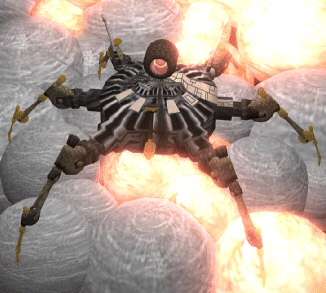
Breaking News
 Not Worth Fighting For? 1,000 Ukrainian Men Arriving In Germany Every Week
Not Worth Fighting For? 1,000 Ukrainian Men Arriving In Germany Every Week
 The Pill For Everything: Why Off-Label Gabapentin Prescriptions Are Soaring
The Pill For Everything: Why Off-Label Gabapentin Prescriptions Are Soaring
 NatGas Soars On Incoming Cold Snap, Snow For Eastern U.S.
NatGas Soars On Incoming Cold Snap, Snow For Eastern U.S.
Top Tech News
 The 6 Best LLM Tools To Run Models Locally
The 6 Best LLM Tools To Run Models Locally
 Testing My First Sodium-Ion Solar Battery
Testing My First Sodium-Ion Solar Battery
 A man once paralyzed from the waist down now stands on his own, not with machines or wires,...
A man once paralyzed from the waist down now stands on his own, not with machines or wires,...
 Review: Thumb-sized thermal camera turns your phone into a smart tool
Review: Thumb-sized thermal camera turns your phone into a smart tool
 Army To Bring Nuclear Microreactors To Its Bases By 2028
Army To Bring Nuclear Microreactors To Its Bases By 2028
 Nissan Says It's On Track For Solid-State Batteries That Double EV Range By 2028
Nissan Says It's On Track For Solid-State Batteries That Double EV Range By 2028
 Carbon based computers that run on iron
Carbon based computers that run on iron
 Russia flies strategic cruise missile propelled by a nuclear engine
Russia flies strategic cruise missile propelled by a nuclear engine
 100% Free AC & Heat from SOLAR! Airspool Mini Split AC from Santan Solar | Unboxing & Install
100% Free AC & Heat from SOLAR! Airspool Mini Split AC from Santan Solar | Unboxing & Install
 Engineers Discovered the Spectacular Secret to Making 17x Stronger Cement
Engineers Discovered the Spectacular Secret to Making 17x Stronger Cement
How Nanotechnology Is Going to Bring About a Strange New Age of Warfare

They want bigger warships, bigger tanks, and bigger explosions. Sometimes however, the littlest things can be the most dangerous. In fact, developments in nanotechnology may be about to usher in a new class of miniaturized weapons that shouldn't be underestimated.
CNBC recently interviewed physicist and futurist Louis Del Monte on his new book "Nanoweapons: A Growing Threat to Humanity." The future it paints sounds absolutely terrifying:
One unsettling prediction Del Monte's made is that terrorists could get their hands on nanoweapons as early as the late 2020s through black market sources.
According to Del Monte, nanoweapons are much smaller than a strand of human hair and the insect-like nanobots could be programmed to perform various tasks, including injecting toxins into people or contaminating the water supply of a major city.

 Not Quite Yet, China
Not Quite Yet, China

